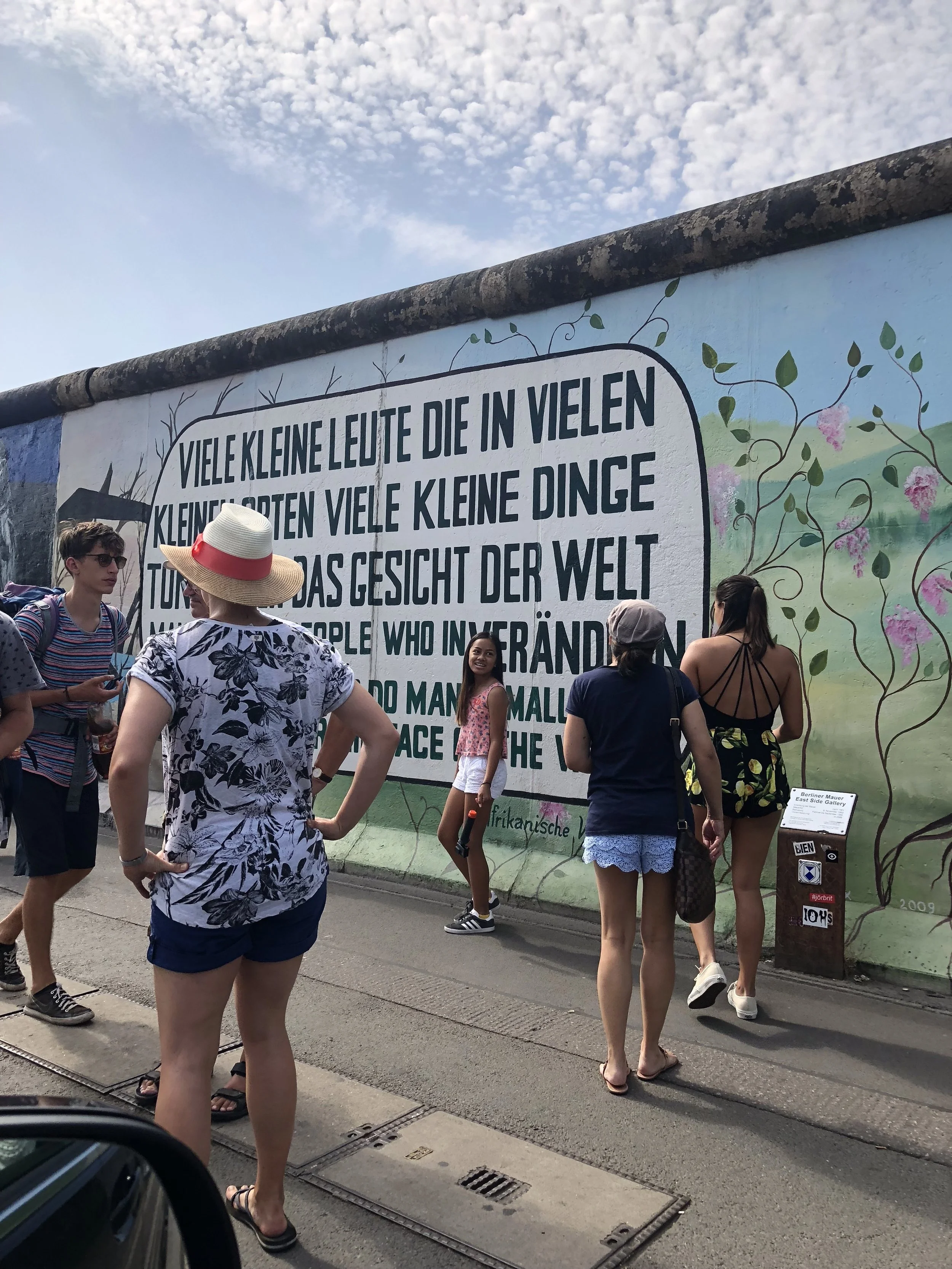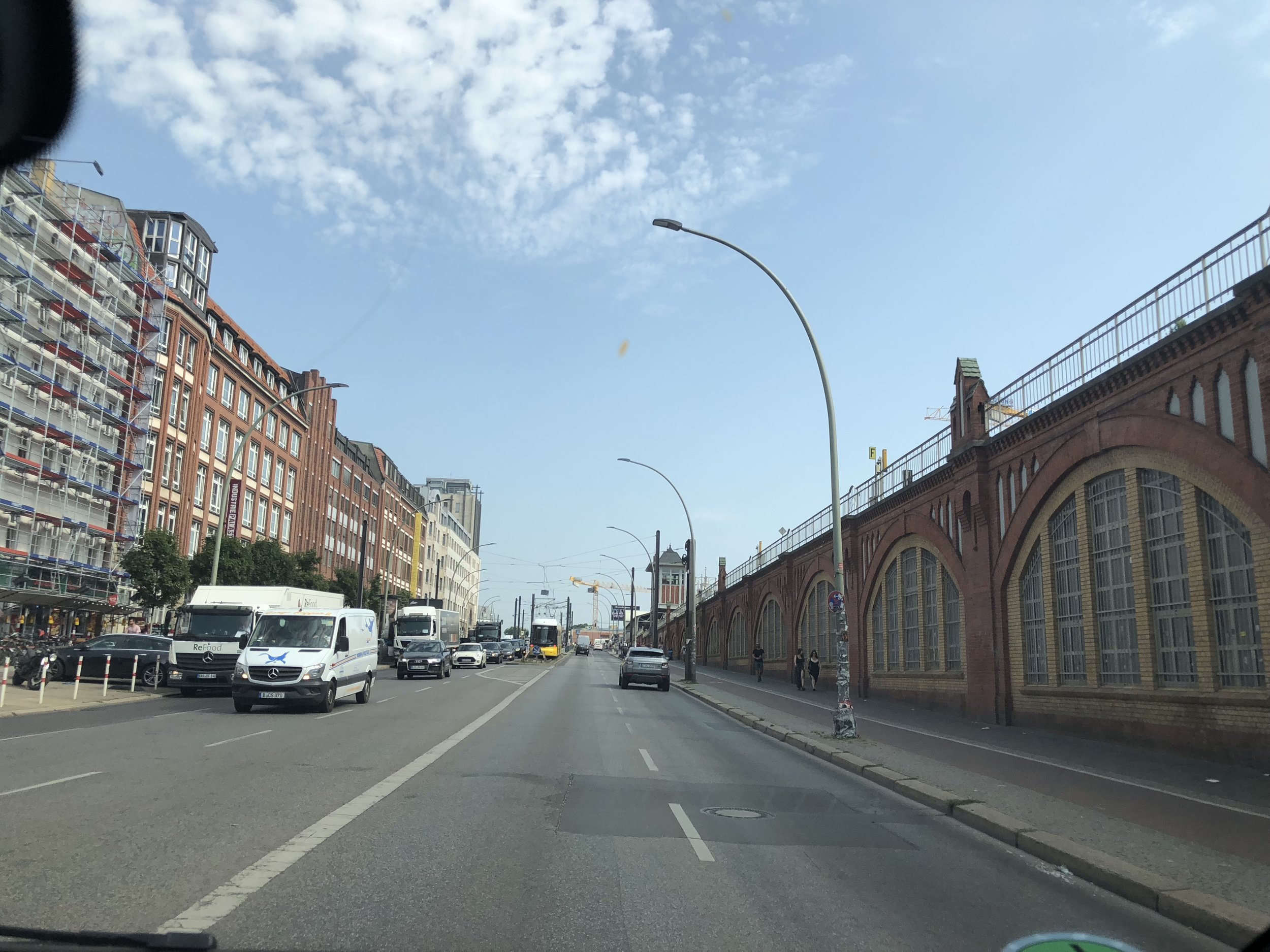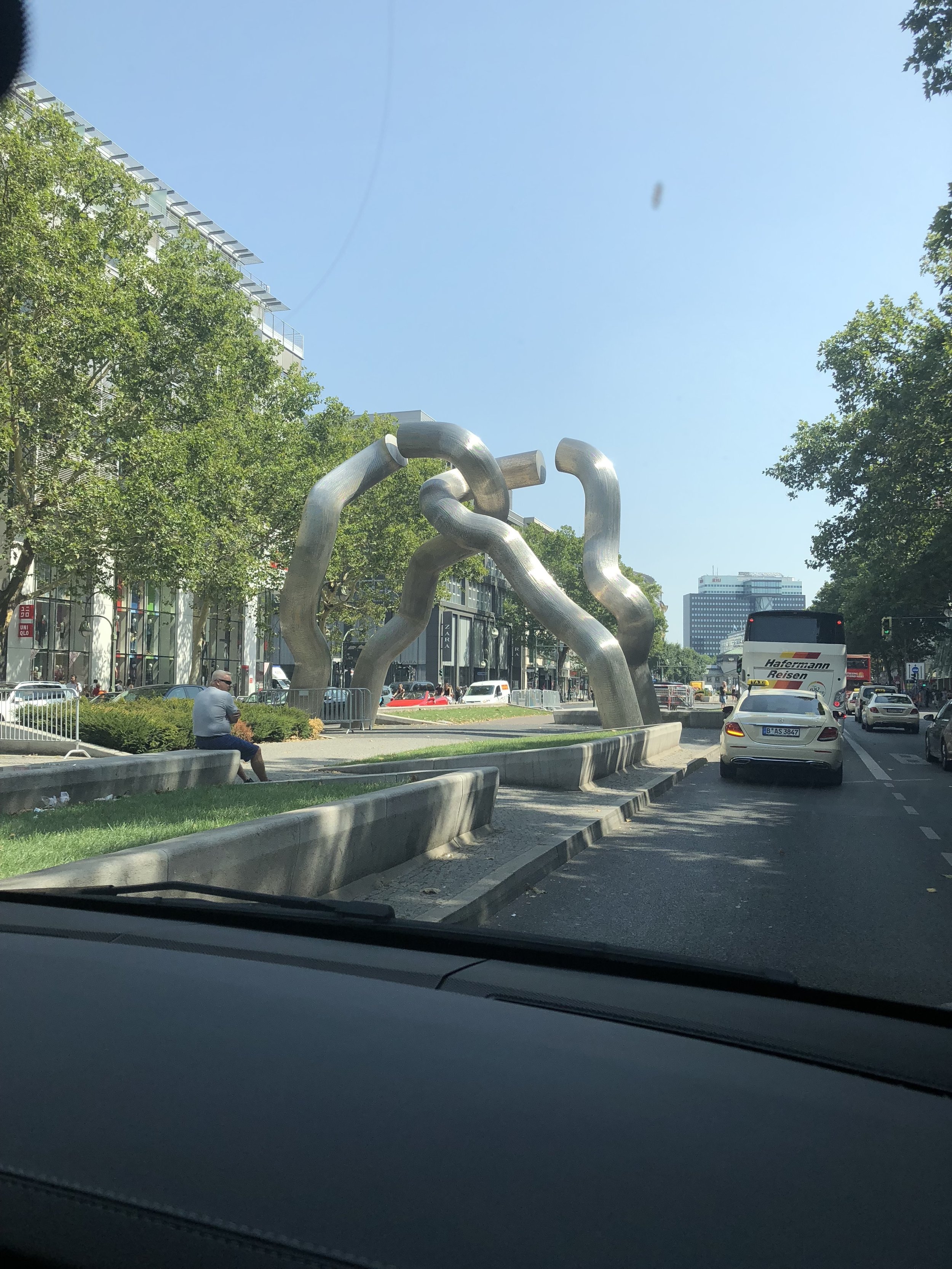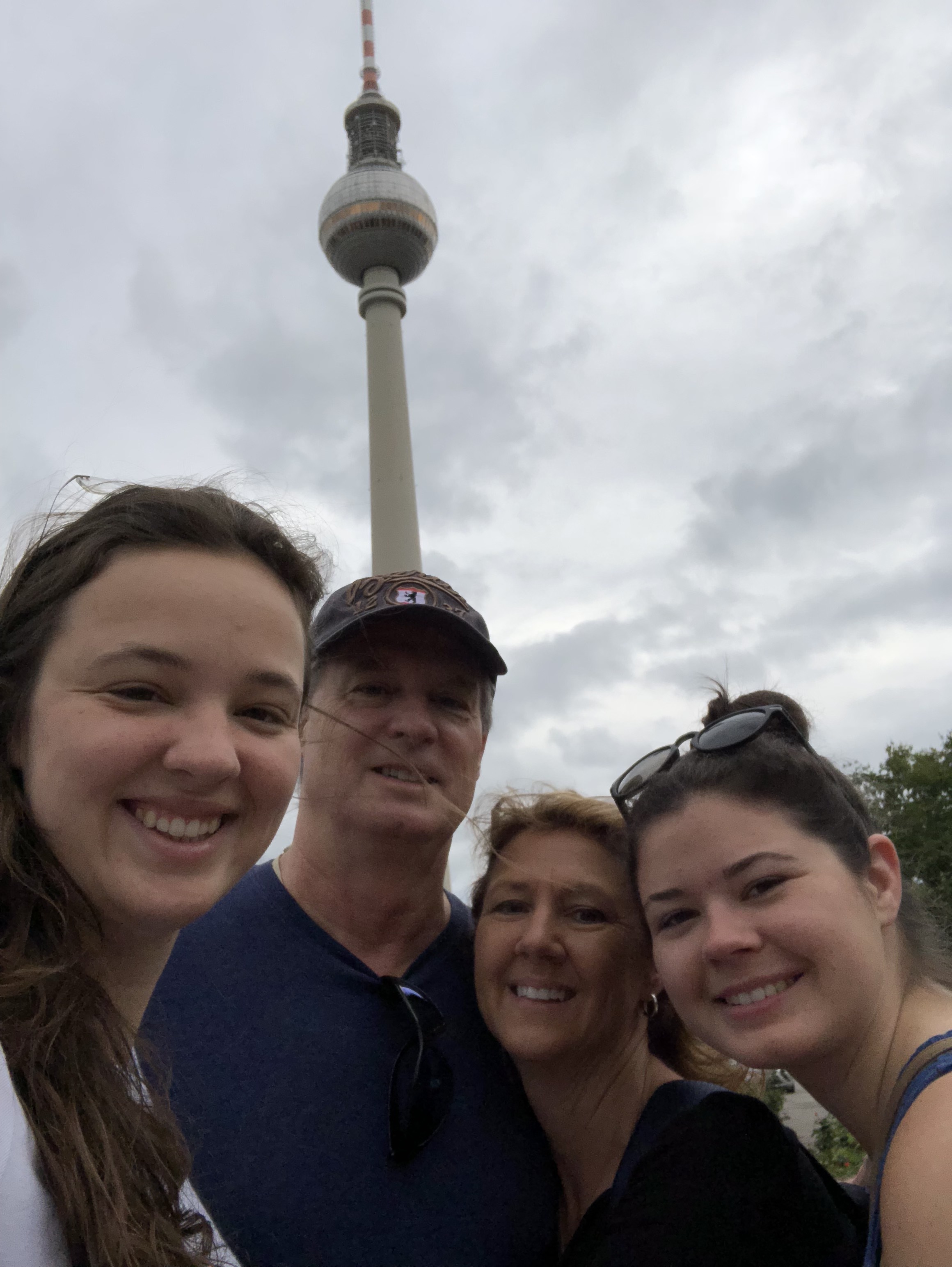Berlin 1
I arrived by train in Berlin late Wednesday evening. On Thursday, we went with a guide, Harold, and did a driving tour around the city.
For many years, the Russians occupied East Berlin and the people of East Berlin were not allowed to leave the area. The people were confined from when the wall was built on the night of August 12-13, 1961 until November 9, 1989 when the wall came down.
We first visited a section where we could see how the wall had been setup. We could see the wall that was viewed from the people living in the east. It was 15 feet high in some places, with a rounded cap so that you could not take hold and hoist over. Just on the other side of the wall were barbed wire obstacles, land mines, electric fencing, and sand trenches so that footprints could be seen. The area between the walls also had 302 guarded watchtowers and tall bright lights every few hundred feet so that everything could be seen at night. After another set of deterrents there was a second wall. The second wall was on West Berlin’s side. I always thought there was a wall dividing East and West Berlin but it was so much more than that. The wall was setup so that no one could escape and if they tried to, they would be easily spotted and taken care of immediately. West Berlin was sitting in the middle of occupied Germany and people from West Berlin that had the freedom to leave could only do so on 3 specified routes and there were no exits as you passed through East Germany.
Next Harold took us to an abandoned train yard that used to be in East Berlin. The area has been revitalized as a local youth hangout. There are numerous cafes and clubs in one section that do not wake up until the late afternoon and close as the sun rises. The other part of the train yard has been turned into an activity park with rock climbing areas and indoor skating for skateboards. The entire area had been covered in graffiti art and posters plastered on the old walls and train containers. It is a very abandoned, industrial looking area.
East Berlin had not been rebuilt after WWII except for very basic housing and government building until after the wall came down. West berlin was cleaned and reconstructed from the devastating damage of WWII during the fifties and sixties. Since the wall came down, there has been tremendous construction and rebirth of the area. The city has taken pride in rebuilding but also keeping all evidence of the history of WWII and The Cold War. Today’s Germans believe in acknowledging history and keeping evidence of it to help prevent history from repeating itself.
We visited several residential communities; both compound style inside the busy West Berlin and renovated communities similar to other German cities where townhomes abut other townhomes. For lunch, we stopped at a food truck to try currywurst. Currywurst is a local cuisine, which is sliced brat sausages with curry powder sprinkled on top and a thick curry sauce on top. I found it to be very good and not as spicy as I had thought.
Next, we traveled down the main city streets and viewed shopping areas, places where Christmas Markets would be held, as well as visited historic churches that had been mostly demolished during the war and rebuilt. We also went to Grosser Tiergarten and Victory Column, and Charlottenburg Palace.
After our tour, I had to go back to the hotel to work on application essays.
After 5 hours of working, we went to a local neighborhood, The Nikolai Quarter, and had dinner at a Germany restaurant that served local cuisine. I had traditional pork medallions with fried potatoes and green beans. I also tried a local unfiltered beer, which was very good.









































































































































































































